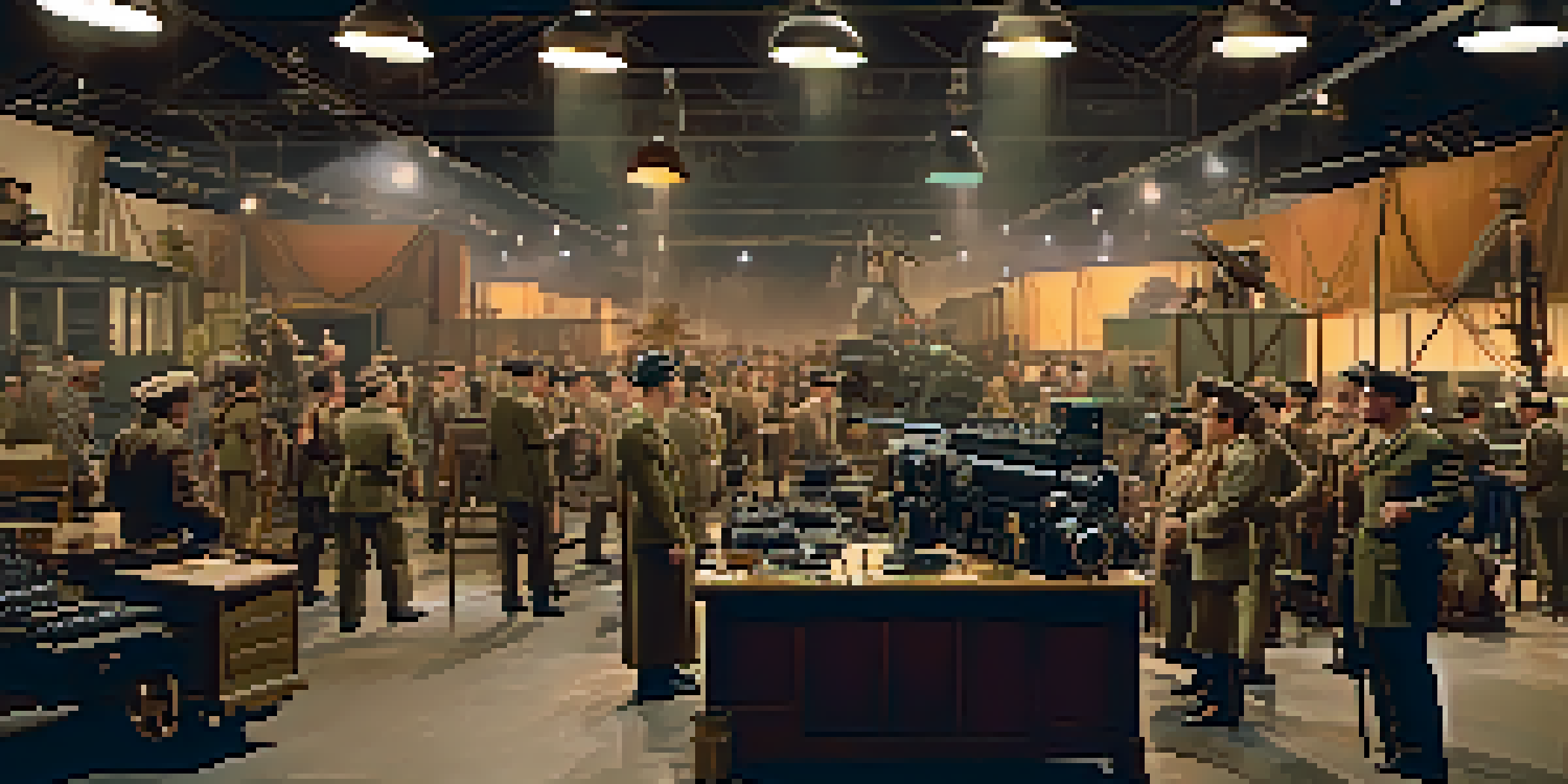Impact of World War II on Film Censorship and Propaganda

Introduction: The Role of Film in World War II
World War II marked a significant turning point in how films were used as tools for communication. During this tumultuous time, governments recognized the power of cinema to influence public opinion and morale. Filmmakers were called upon to create narratives that not only entertained but also informed and motivated the masses. As a result, film became a potent weapon in the war effort, shaping perceptions in both subtle and overt ways.
Government Control and Film Censorship
With the advent of war, many governments implemented stringent censorship measures to control the narrative surrounding the conflict. This involved scrutinizing film scripts and final cuts to ensure that only approved messages were delivered to the public. The aim was to maintain morale and prevent any content that could incite dissent or fear. As a result, filmmakers had to navigate a complex landscape where creativity often clashed with governmental restrictions.
Film as a Tool for Propaganda
During World War II, films were strategically crafted to influence public opinion and bolster support for the war effort.
The Rise of Propaganda Films
Propaganda films became a staple during World War II, crafted to glorify the war effort and demonize the enemy. These films often featured heroic narratives that highlighted the bravery of soldiers and the righteousness of their cause. An example is the iconic 'Why We Fight' series, which aimed to educate American troops about the reasons for fighting. Such films played a crucial role in shaping public perception and garnering support for the war.
Impact on Hollywood and Filmmaking Techniques
The war dramatically influenced Hollywood, leading to the incorporation of new filmmaking techniques to enhance propaganda. Filmmakers began to experiment with special effects, sound design, and storytelling methods to create more impactful narratives. This era marked a shift towards utilizing film as a means of persuasion, resulting in a legacy that continues to influence the industry today. The techniques pioneered during this time laid the groundwork for modern cinematic storytelling.
Censorship Shaped Film Narratives
Governments imposed censorship during the war, leading filmmakers to navigate restrictions that affected how stories were told.
Censorship and the Representation of Gender
World War II also had a significant impact on the representation of gender in films, often reinforcing traditional gender roles. Women were frequently portrayed as supportive figures or symbols of the home front, reflecting societal expectations. However, there were notable exceptions where women took on more active roles, showcasing their contributions to the war effort. This duality in representation highlights the complexities of censorship in shaping gender narratives during this era.
Post-War Reflections: Censorship Eases but Impacts Remain
After World War II, censorship began to ease, allowing for more diverse storytelling in films. However, the impact of the war and the propaganda films created during this time continued to resonate in the industry. Filmmakers often drew from the themes and narratives established during the war, leading to a rich tapestry of films that explored the human experience in conflict. This legacy of WWII remains a critical point of reference for filmmakers even today.
Legacy of WWII in Modern Cinema
The impact of World War II on film continues to resonate today, influencing how filmmakers approach sensitive topics and government roles in storytelling.
The Legacy of WWII on Modern Film and Censorship
The influence of World War II on film censorship and propaganda can still be observed in contemporary cinema. Modern filmmakers often grapple with the ethical implications of representing conflict and the role of government in storytelling. The lessons learned from the WWII era continue to inform how films are created and received, particularly regarding sensitive topics. As audiences, we must remain aware of this history as we engage with films that address war and its consequences.
Conclusion: Lessons from the Past
Understanding the impact of World War II on film censorship and propaganda provides valuable insights into the power of cinema. It reminds us of the responsibility filmmakers hold in shaping narratives that can influence public sentiment. As we reflect on this history, we can better appreciate the complexities of filmmaking in times of conflict and the ongoing dialogue between art and politics. Ultimately, the lessons drawn from this era continue to resonate, reminding us of the enduring power of film.